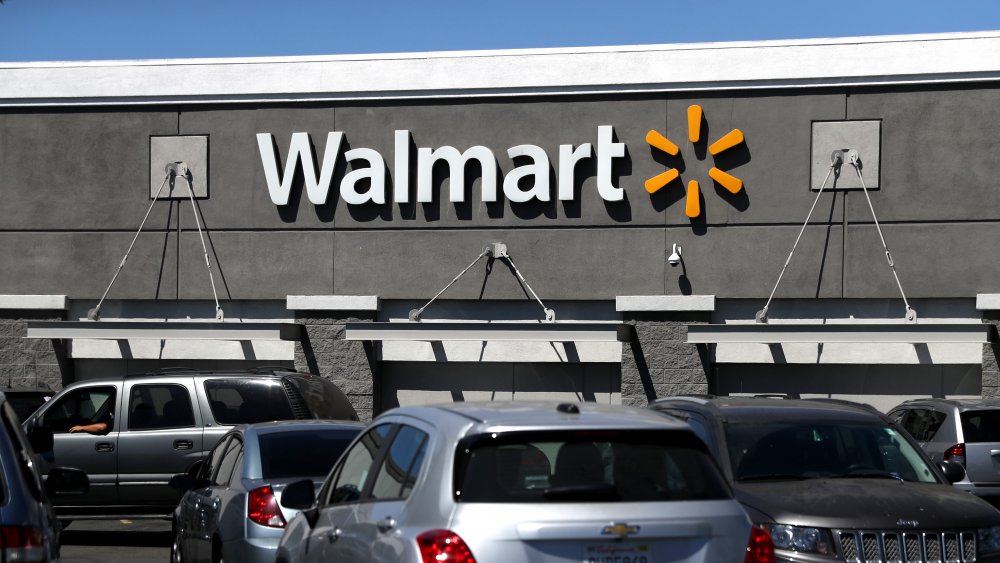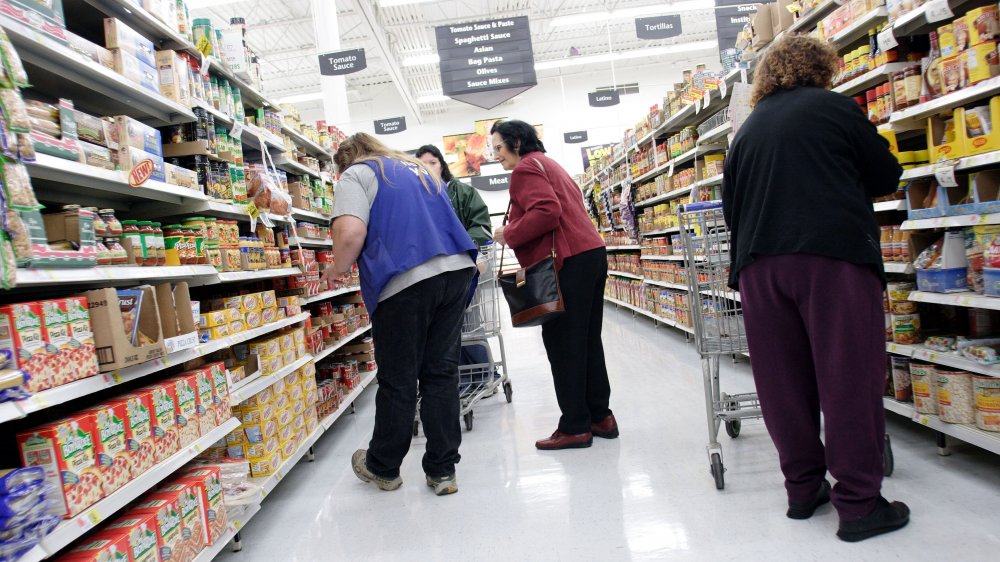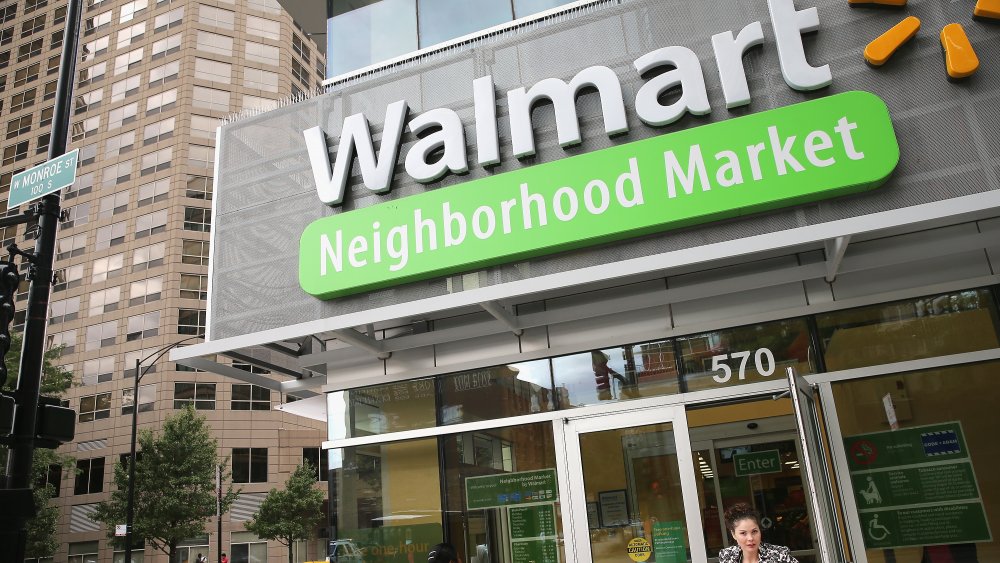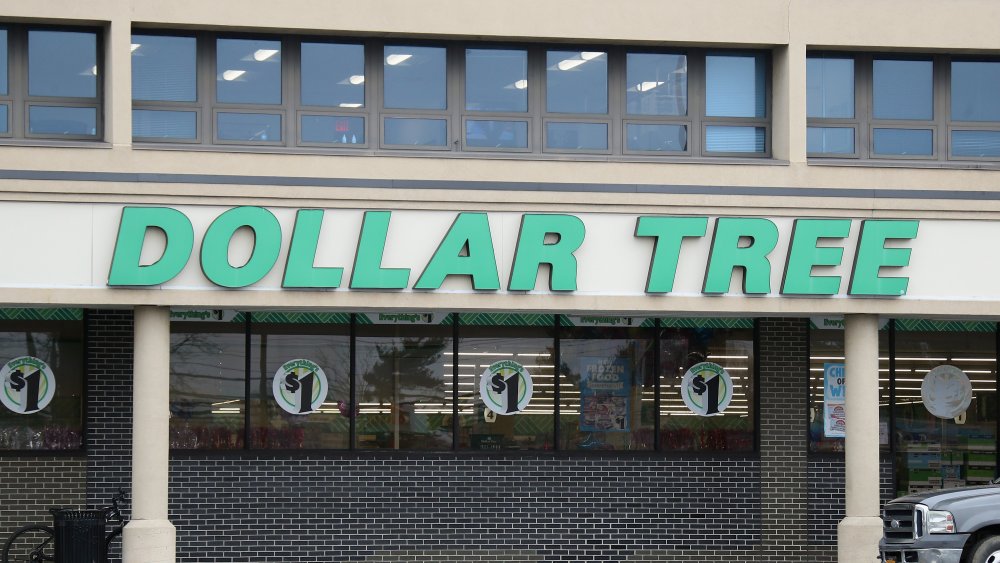Here's Why Walmart Is Closing Down Stores
You know things aren't looking good when your boss says half of his site visits makes him touchy.
"I'd say we're at about 50% of where we should be," former Walmart US CEO Greg Foran said in 2019. "I get out to stores every single week. About half the time I'm ok with it, and the other half I'm grumpy" (via Business Insider). Foran has a list of what he's unhappy about, including customer service, assortment, inventory levels, and product offer. "Fresh has been a big deal, and we haven't even got close to arriving on fresh," Foran expained. "I still go into stores and the wet wall — leafy greens — quality isn't good ... they're not rotating the merchandise. But it's better than it was." This may be partly why Foran was replaced later that year by John Furner (via CNBC) — but he makes a fair point.
Add to his comments the stiff competition it faces from smaller, leaner operations like Aldi, and we may have a clearer picture of why Walmart has decided to close as many as 154 stores in the US, and 269 stores globally. CNBC says as many as 10,000 employees in the US alone already have, or will be, affected by the shutdowns.
Walmart is its own worst enemy
Data analytics firm Placer may have the answer to Walmart's closures — and it has nothing to do with operating in a hostile consumer environment and everything to do with having to compete against itself. As an example, Placer.AI talks about a Walmart Supercenter in Dallas, Texas, which was operating at normal levels and was considered to have better than average foot traffic. Because it was in an area with two other Walmart Supercenters, it wasn't competing with other stores for competition. It showed an almost complete overlap of potential customers, so the decision shoppers needed to make was not whether or not to go to Walmart, but which one to go to. This phenomenon, known as cannibalization, repeats itself across in several areas that Walmart operates in, including Louisiana.
No wonder the company's CEO isn't happy.
Walmart's small-format stores need retooling
Many of the closures in the country involve Walmart's Express format stores. Walmart began testing the concept in 2011 and rebranded those outlets as Neighborhood Market stores in 2014. Neil Saunders, who heads a retail research firm, tells CNBC that "It is notable that Walmart has opted to shutter all 102 of what was once called its Express format stores. While this store type is aligned with the trend of shopping more locally, it has faced stiff competition from the rise and rapid growth of dollar stores."
The Silicon Valley Business Journal says Walmart may still be experimenting with its "small format," Neighborhood Market stores, because while it opened about 676 of these new stores from 4014 to 2018, it also had to shut down 130 of them in the same timeframe, because they were performing poorly.
Walmart is facing increased competition
In its annual report for 2018, Walmart said that it's US arm "competes with both physical retailers operating discount, department, retail and wholesale grocers, drug, dollar, variety and specialty stores, supermarkets, hypermarkets and Supercenter-type stores, and digital retailers, as well as catalog businesses." The report also warned that the company needs to grow its online business and integrate other digital platforms.
Even giants can stumble, and this seems to be the case with Walmart, and as Retail Dive points out, its stores are no longer "the best deal in town," thanks to competition from the likes of Amazon in the e-commerce universe, and potentially from dollar stores in the brick-and-mortar world. But a stumble could be just what the doctor ordered if Walmart can prove itself to be agile and learn from its mistakes.



